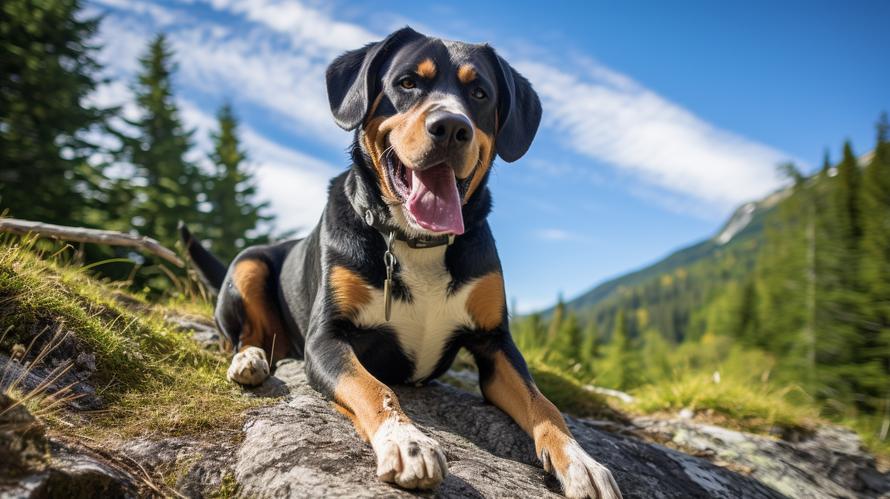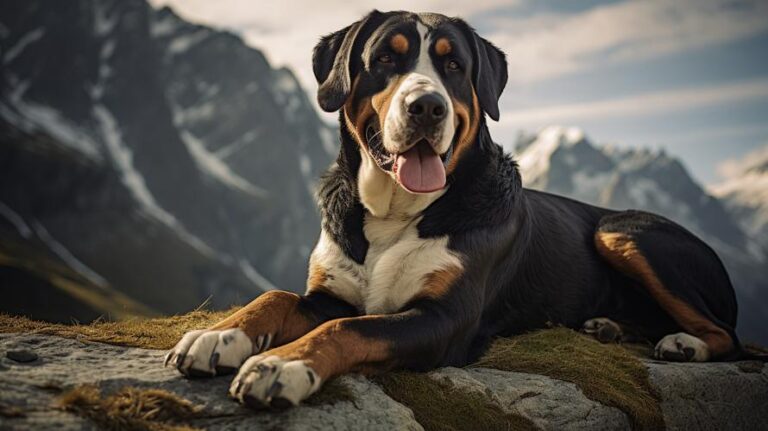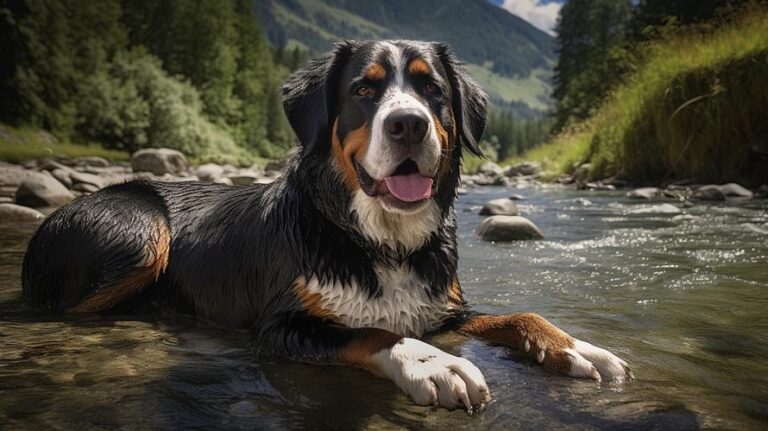Every morning, a bunch of fluffy clouds in the form of Greater Swiss Mountain Dogs (GSMD) trot happily down the streets of Switzerland. Their massive stature, coupled with physically dominating features, often gives the first-time onlookers an impression of them being “dangerous”. But is this perception accurate? Or is the Greater Swiss Mountain Dog just another giant soft-hearted furball misunderstood by many?
Let’s meet these multicolored canines who are particularly famous for their tricolor coats and striking, expressive eyes. They are larger than life – figuratively and literally – standing typically between 23.5 to 28.5 inches for females and 25.5 to 28.5 inches for males. As adults, they weigh between 85 and 140 pounds, almost the size of a small horse!
Their unmistakable muscular build, awe-inspiring physique, might startle the bravest of hearts. However, true dog lovers and particularly GSMD enthusiasts know that beneath this robust exterior beats a loving, gentle heart. Contrary to popular belief, they are not dangerous if appropriately trained and socialized. They hold a multi-faceted personality, epitomizing strength, agility, endurance, and a surprising amount of tenderness. Their amicability makes them perfect companions, but they are also exceptional working dogs, given their robustness and diligence.
Like any other dog breed, the Greater Swiss Mountain Dog’s demeanor is significantly influenced by its upbringing, socialization, and training. Therefore, while they are generally rumored to have an inherently protective nature which could potentially lead to aggressive conduct in certain scenarios, such generalized statements need a broader context.
Diving into their history, the Greater Swiss Mountain Dogs were bred to be versatile working dogs capable of handling a multitude of tasks. A herding dog at heart, they were primarily bred to drive dairy cattle, pull loaded carts to market, and serve as watchdogs and family companions. Their historical roles demand protective instincts, intelligence, strength, and sociability, thus shaping their reputation as fantastic working dogs. Consequently, their family-loving nature and innate protective instincts got them a “dangerous” tag, an overstatement by many standards.
GSMDs are known for their impeccable work ethic and versatility, but they’re equally renowned for their winning personalities. They are incredibly affectionate, loyal and love pleasing their human companions. Their amiable demeanor around children, paired with their patient and gentleness nature, make them a great choice for families with kids. However, due to their size, supervision is always recommended during playtime to avoid unintentional injuries.
Contrary to the stereotypical perception of them being dangerous, they are often described as ‘gentle giants’ by those who have had the chance to know them intimately. Through early socialization and consistent, positive reinforcement-based training, these dogs can learn to differentiate between genuine threats and harmless individuals or situations, making them predictable, well-mannered pets.
Hence, the key to a well-rounded, friendly Greater Swiss Mountain dog is careful upbringing. As an owner, you must invest your time and efforts into the essential training and socialization of your GSMD from an early age. This involves introducing your puppy to different kinds of people, environments, sounds, and experiences, always ensuring these encounters are positive.
A well-socialized GSMD is a happy, confident dog that is at ease in different situations, thus reducing the chances of fear-based aggression. Similarly, training need not be a chore, considering GSMD’s eagerness to please their trusted humans. Their quick wit and compliant nature make them relatively easy to train with the right techniques, which ideally include positive reinforcements using treats, praises or both!
Furthermore, they need suitable outlets for their energy due to their working dog history. Regular physical activity and mental enrichment can significantly influence a GSMD’s behavior, just like any other dog breed. Lack of exercise could lead to pent up energy, which eventually turns into destructive behavior.
Imagine a Swiss Mountain Dog, bored and full of energy, with no constructive channel to release it – a potential disaster, right?! Therefore, it is crucial to ensure that your GSMD gets enough physical exercise and mental stimulation. A long walk or jog, coupled with some playtime, will keep both their body and mind healthy, resulting in a docile and well-behaved furry companion.
To wrap up, we can conclude that stereotyping the Greater Swiss Mountain Dog, or any dog breed for that matter, based on isolated incidents or misconceptions, would be unfair. They are imposing, yes – dangerous, no. Playful yet protective, hardworking yet loving, it is their unique blend of strength and gentleness that gives the Greater Swiss Mountain Dogs their distinctive charm. For anyone willing to invest time in its proper training, exercise, socialization, this breed makes a loving, loyal companion that is far from being dangerous. At the end of the day, it is us, the humans, who need to understand them better to love them better.



